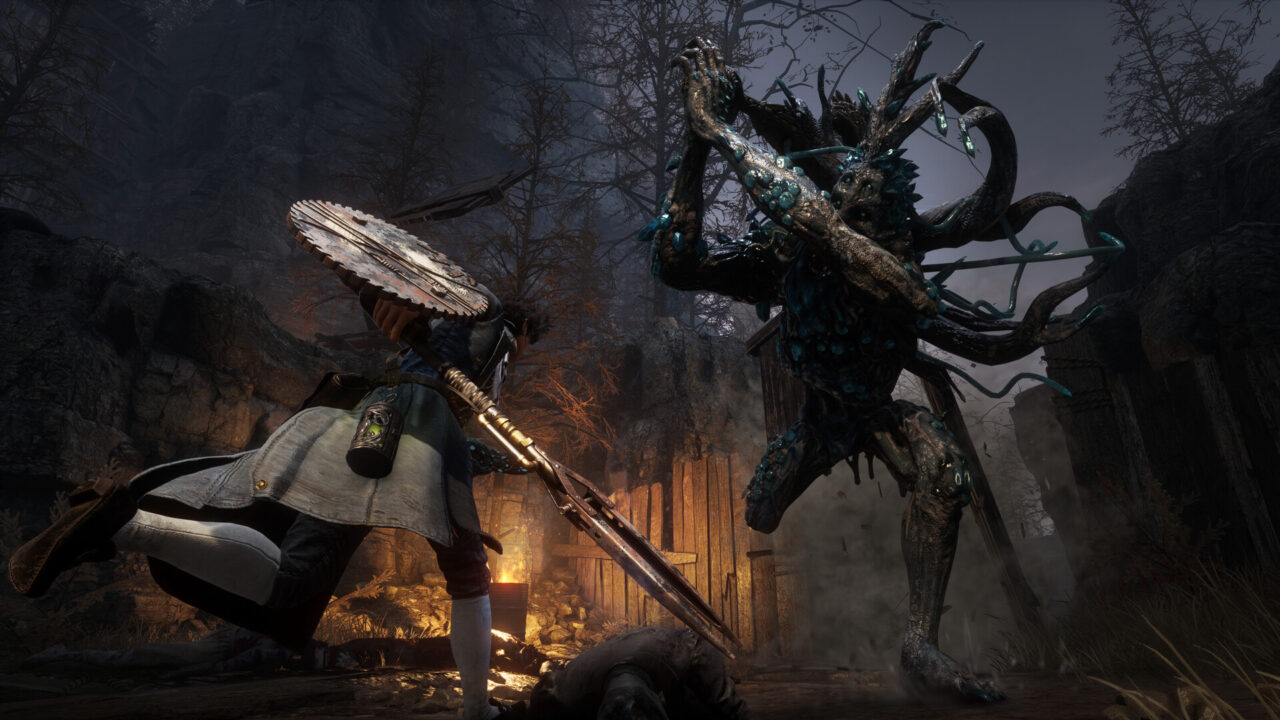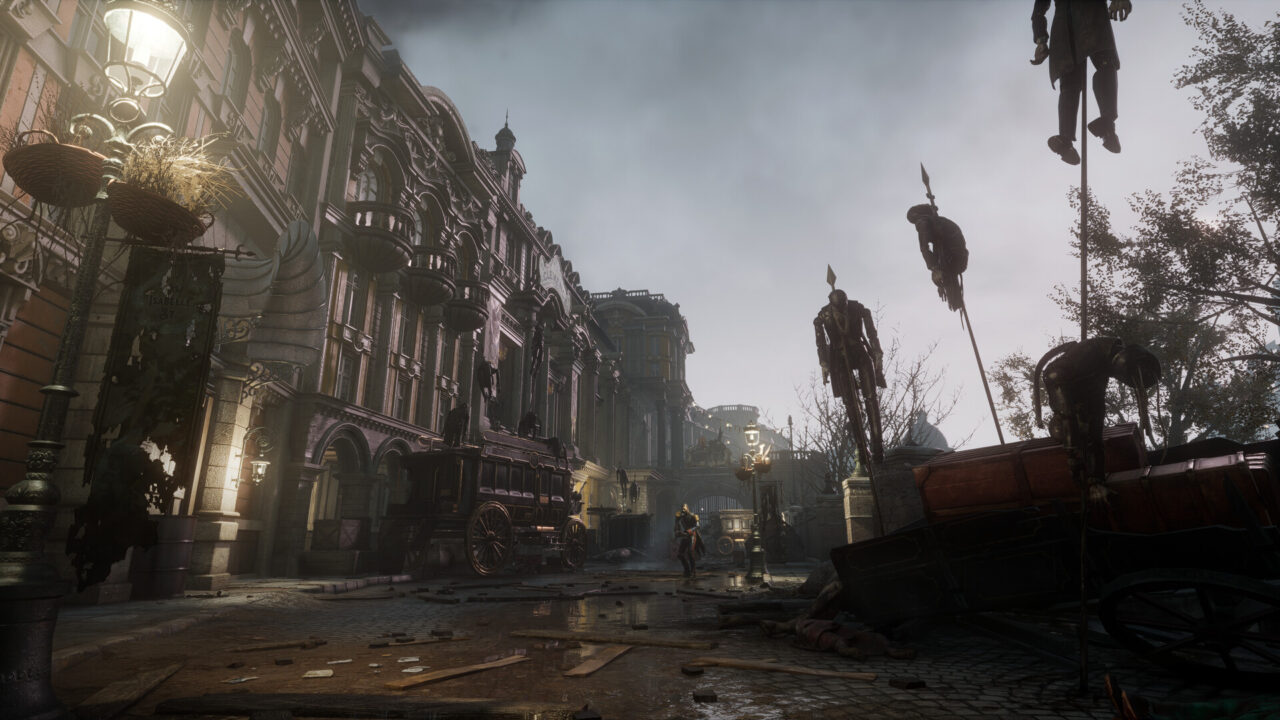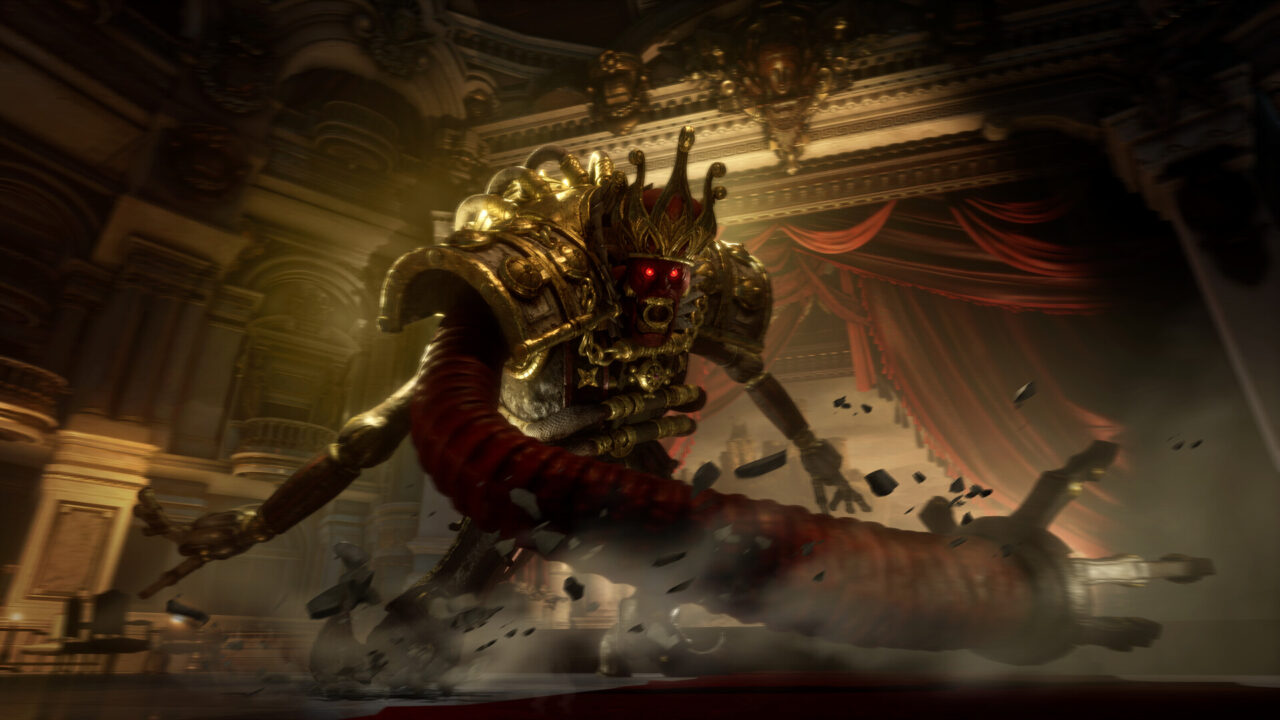Lies of P Uses Combat to Make you Appreciate its Creepy Puppets

Lies of P is clearly heavily inspired by Bloodborne. The gothic locales and high stakes combat feel like they’d be right at home in another madness-tinged FromSoftware game. The creepy animatronic puppet enemies feel like they’d fit in, too. These quivering, stumbling machines are loaded with malice. They’re pretty frightening to behold. You’ll be intimately familiar with every unsettling detail of their mechanical bodies by the end of the game, too. That’s because, to truly survive the puppet onslaught, you’ll have to learn to stand your ground against your foes. You’ll have to stare them down and guard against whatever attack comes your way.
Like the game that inspired it, you’re not going to want to take too many hits. Our poor puppet protagonist can’t endure many thumps before succumbing to its wounds. Unlike in the games that inspired this, you won’t be doing a lot of dodging and rolling in this game to get to safety. Instead, this title puts more of an emphasis on guarding attacks. Yes, you CAN run or roll out of the way of an attack. Guarding is still better, though.
There are several reasons for this. For starters, dodging doesn’t work very well in Lies of P. If you’re familiar with Souls games or Bloodborne, you’ll know that you can do a dodge roll out of the way. This usually makes you invincible for a few moments. Even if the invincibility doesn’t last, the roll tends to quickly get you out of danger. In this game, the roll is a bit slow. It doesn’t seem to protect you for very long, either. You have to be much more careful with your timing if you want it to work. Even when it does work, it feels like it doesn’t carry you far away. So, you tend to get smacked unless your timing is impeccable.

Instead of trying to time a roll, you can just block instead. This block will see you standing and absorbing the strike without moving much. You still take a little bit of damage from the attack, though. It sounds worse, but the damage you take from a blocked attack is temporary. If you can hit your enemy back within a few seconds, you’ll regenerate the health you lost from blocking. This encourages you to block and take hits, then immediately slam your foe right back. Considering a well-timed dodge roll tends to take you so far from your foe that you can’t hit them back, it’s better to stand and block. That way you can return to full health while also landing another hit on your enemy.
If you can get your timing down, you can do a perfect guard in Lies of P. This guard causes a red spark to appear as you block. If you land enough of these, you’ll stagger your enemy. This lets you clobber them for huge damage. So, you get a huge return for being good at blocking. Trouble is, you have to block with great timing. You’ll need to tap the block button just as you’re about to get hit. The timing is fussy, but not terribly hard if you pay attention to what your enemies are doing.
So, to land those perfect guards, you’ll spend a lot of time watching your enemies. In that time, you learn to appreciate all of the details that went into the creepy puppets you’ll face. When a massive train conductor puppet rips its own head off and uses it as a weapon, you’ll be taking in its every detail. You’ll find yourself watching every arcing spark fly from a mechanical police puppet. The subtle twitches as a puppet moves the steel rods that form its fingers. You have to, as you need to keep an eye on what they’re doing. You need to know the exact moment they move with deadly intent.

This had an unintended side effect. It made me really appreciate every eerie detail of the puppet monsters I fought throughout Lies of P. You spend so much time watching how they move that it’s hard not to. That’s something special that comes from some of these challenging action games. When you really need to pay attention to what your enemy is doing, you spend a ton of time just looking at them. You examine every detail of these disturbing creatures because you have to know when they’re going to hit you. You look for any change in their behavior to tell you that they’re about to swing. The best way to do that is to stare at them and take in their every detail.
While soaking in your enemy’s visuals, your heart is pounding. If you miss a tell, you’ll take damage. Especially if you’re going for that perfect guard. The risk pays off, but if you mess up, you’ll get clobbered quickly. So, as you stare down your enemy, you’re wound tight waiting for that change in behavior. You tense up in anticipation. As you learn what your enemy can do, this feeling calms a bit. While you’re first learning how to fight a puppet swinging a huge wheel on a precarious rooftop, things can get tense, though.

This combination teaches you to fear your enemies even moreso, in a way. While Lies of P is filled with scary puppet enemies that look creepy by design, the systems teach you to fear them through the mechanics. You spend so much time staring at them while tensed up and waiting for a strike to guard that you start to feel a tension just from the appearance of a new enemy. A new foe means so much to learn. So many surprising ways they can hurt you while you learn their patterns. You’re taught to be afraid of them based on what they could possibly do, and not just from their eerie appearance.
It was interesting to see how Lies of P used its challenging combat mechanics to make its enemies feel even more frightening. Through making players lean more towards a guarding style, it teaches players to carefully watch their enemies. In doing so, they see and appreciate more of their scary designs. In tensing up while watching and waiting for an attack, it teaches them to further fear what these creatures can do. That’s on top of the high likelihood you’ll die while trying to block attacks. Through doing so, the game teaches you to fear its excellent, disturbing puppets in several different layers, creating some effective unease as you play.
Categorized:Editorials

